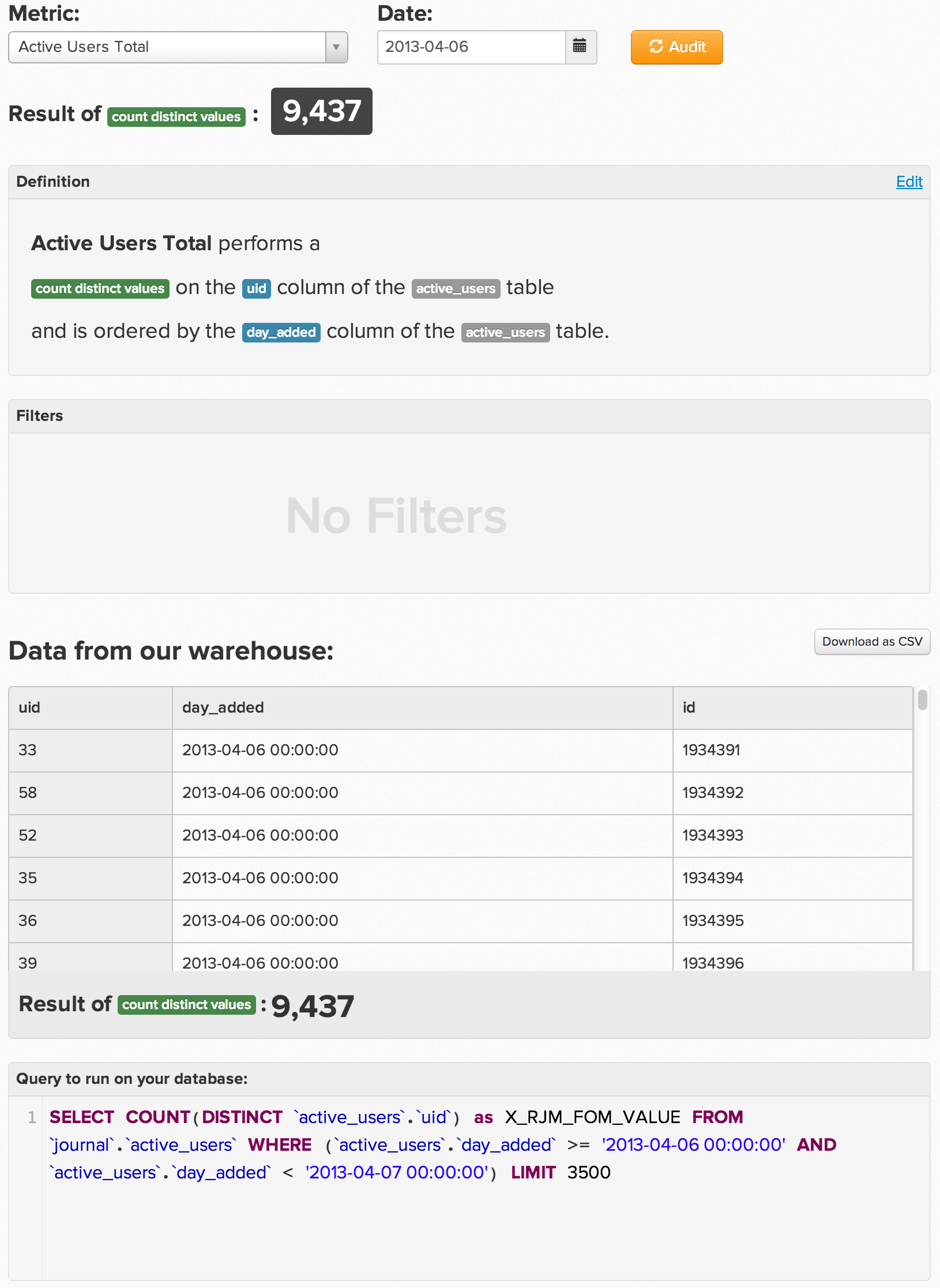The product team has a hot hand these days. Last month we released a completely reworked chart builder, this month we’re releasing the Data Auditor, and next month we’re releasing… Well, honestly, I can’t tell you yet. But it’s going to be good.
We’re really excited about getting the Data Auditor into your hands. From the very earliest days of RJMetrics, we’ve had questions from customers that would go something like this: “How did you get $xxx,xxx for your revenue number? We show $yyy,yyy in our database. Are you sure you’re pulling the right numbers?”
This is, of course, a very reasonable question. There’s not a lot of point in having a business intelligence tool if it’s not giving you accurate numbers. But what we found was that the problem was (almost) never one of accuracy, but rather one of data definitions. Different users would query their data differently, and this would cause confusion when they tried to validate what they saw in RJMetrics. After investigating for a while, we’d ask the customer whether or not they’d remembered to exclude sales tax from their revenue calculations. There would be an “Aha!” moment, and everyone would go home happy.
The problem? This process took a long time, both for us and for you. We’d prefer that you have a dead simple way to verify the accuracy of a given metric and to cross-reference it against your database.
And now you do.
The Data Auditor gives you everything you need to verify the accuracy of your data for every metric in your dashboard. Just choose a metric and a date to sample on, and we’ll show you the relevant rows from our warehouse as well as a query to run on your transactional database to replicate the results. If you’d like a full run-down, check out the help site.
Happy auditing!

